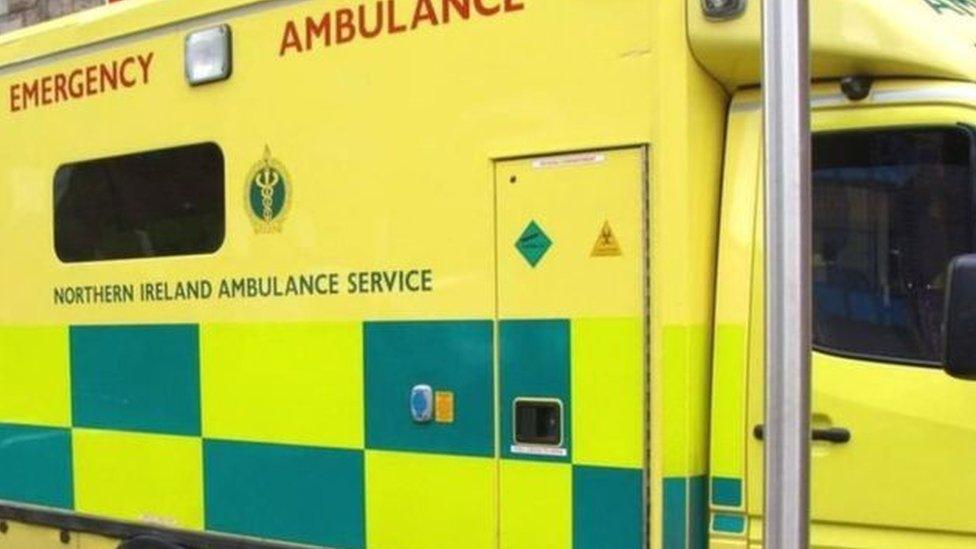NI Ambulance Service to address 'cleanliness issues'
- Published

The Northern Ireland Ambulance Service says it takes the matter "very seriously"
The Northern Ireland Ambulance Service is being placed on "special measures" amid concerns about standards of cleanliness.
It follows a series of Regulation and Quality Improvement Authority (RQIA) inspections of stations and vehicles.
Inspectors visited 21 stations in February.
While good standards were found in some, others fell short on infection prevention, hygiene and cleanliness.
In a statement, the ambulance service said the RQIA has "recommended the secondment of a senior practitioner" to assist the service in "its drive to strengthen internal infection prevention and control governance and assurance arrangements".
The RQIA carried out two initial unannounced inspections in July 2017, one at an ambulance station in Broadway in Belfast, the other in Bangor.
Blood-spattered equipment
They found blood-splattered equipment, ambulances dirty on the inside, unclean equipment, containers not closed and hygiene standards not up to the standard required.
The RQIA did follow-up inspections at the two stations in September and found that nothing had changed. They then took enforcement action.
A third follow-up inspection at the same two ambulance stations in October 2017 found that hygiene policies were not being put into practice.
Further unannounced inspections took place at all 21 ambulance stations across Northern Ireland in February of this year. These inspections found a mixed picture - at least 50% of the stations had issues in regards to unsatisfactory hygiene
The RQIA then called for the ambulance service to be put on "special measures" - meaning it will need to bring in a health professional to advise about better hygiene at stations and crucially, better implementation of policy into practice
It is the first time the RQIA has carried out unannounced inspections of ambulance stations in Northern Ireland, after carrying out similar inspections at emergency departments in hospitals.
'Very mixed picture'
Dr Lourda Geoghegan, medical director with the RQIA, said: "We found a very mixed picture when we visited the ambulance stations and the ambulances
"We did find ambulances and ambulance stations that were in an exemplary situation that were very clean, that is was very clear that care and attention had been taken to all of the systems around infection control and about hygiene control and cleanliness.
"However, the picture was mixed and we did find some areas that the environment was not just as clean as we would have liked it to be."
She added: "The back of an ambulance is actually exactly the same [as an emergency department] - it is a clinical treatment environment and therefore it's extremely important that the standard of hygiene, cleanliness and infection prevention is maintained very high and is consistent across all of the ambulances.
"You would not expect any clinical treatment environment not to be of a high standard of cleanliness."
The NIAS has said it takes the matter "very seriously" and is "committed to take all necessary steps to ensure our stations and vehicles meet the high standards required to protect the patients who use our services".